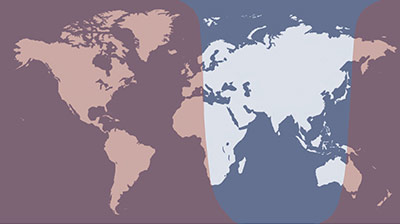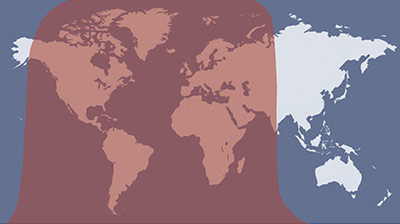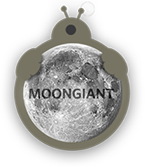
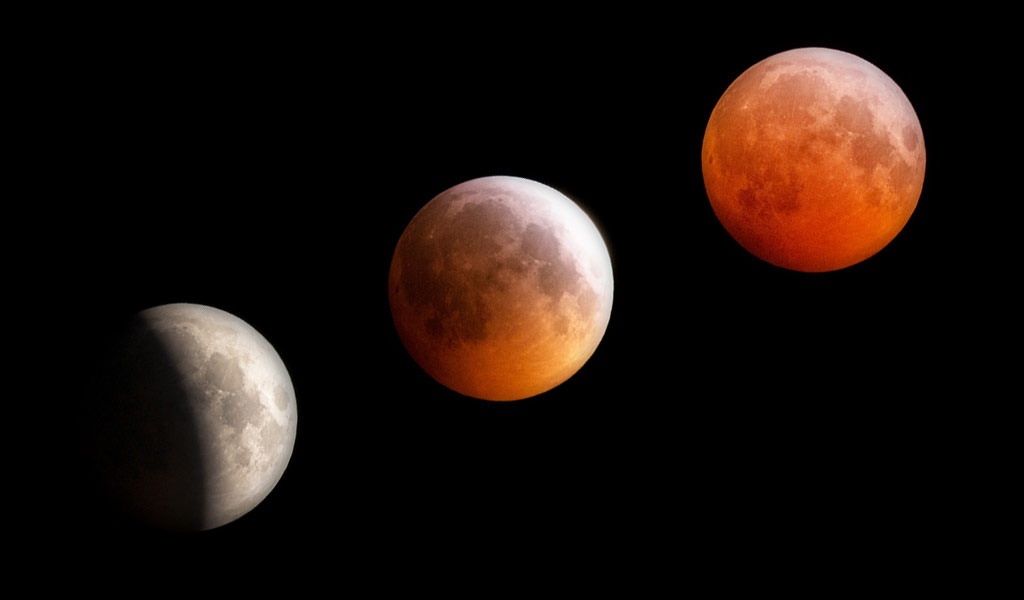
Lunar Eclipse Calendar
Looking for the next lunar eclipse? Our Lunar Eclipse Calendar is a straightforward quick reference guide provides information about upcoming lunar eclipses. It lists the dates and times for each event, the type of lunar eclipse (be it total, partial, or penumbral), and the geographical regions where they will be visible.
Remember that a lunar eclipse is always accompanied by a solar eclipse. These celestial events provide a stunning display in the night sky and occur periodically throughout the year. Keep this guide handy to track upcoming lunar eclipses, ensuring you don't miss the chance to witness these extraordinary occurrences. With clear dates and viewing locations, this guide makes it easy to plan ahead for these awe-inspiring celestial shows.
2024 Lunar Eclipses
The 2024 lunar eclipse forecast presents a mix of scenarios. On the bright side, both of this year's eclipses will be visible over large parts of the Earth, offering widespread viewing opportunities. However, a note of disappointment is that neither will be a Total Lunar Eclipse. The first will be a Penumbral Eclipse, where the moon only passes through the Earth's outer shadow, resulting in a subtle shading rather than a dramatic transformation. The second is a Partial Lunar Eclipse, but it will only cover a minor section of the moon with the Earth's shadow. While these events may not match the grandeur of the total lunar eclipses anticipated in 2025, they still present unique and worthwhile celestial phenomena to observe.
Visible in parts Europe, Western Africa and Eastern Austraila. All of South America, North America, Pacific and Atlantic oceans.
Visible in Europe, North America, Africa, South America, some of Asia and the Artic and Antarctica. Most of Pacific and Atlantic oceans.
2025 Lunar Eclipses
2025 stands out as an exceptional year for lunar eclipse enthusiasts, offering not one, but two Total Lunar Eclipses. These spectacular celestial events will be visible across extensive areas of the Earth, providing a rare opportunity for numerous viewers to witness the moon's dramatic transformation. Each of these total eclipses promises to be a breathtaking spectacle.
Total eclipse visible in North America and some parts of South America. Other areas will see partial eclipse.

Total eclipse visible in Asia, eastern Africa and western Australia. Other areas will see partial eclipse.
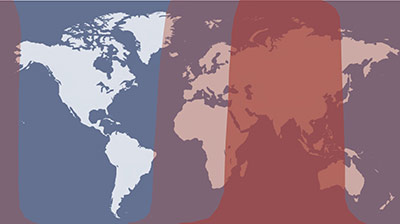
2026 Lunar Eclipse
This year begins with a March total lunar eclipse that will be visible in a somewhat limited geographical area. Primarily observable in parts of Alaska, eastern Australia, and remote regions of Russia, this total eclipse offers a unique viewing opportunity in these specific locations. The second eclipse in August presents a notably impressive partial lunar eclipse, where a significant portion of the moon will be enveloped by Earth's shadow.
Total eclipse visible in small parts of Russia, North America and Australia. Partial eclipse in most of North and South America and Asia.
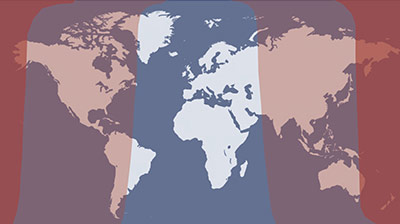
Visible in Europe, Africa, North and South America. Also over much of the Atlanic and Pacific oceans
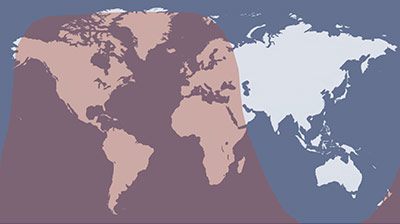
2027 Lunar Eclipses
In 2027, the celestial calendar features two penumbral lunar eclipses. During these eclipses, the moon will undergo a subtle darkening, a contrast to the more pronounced shadowing seen in partial eclipses. These penumbral events offer a gentler yet distinct lunar experience.
Visible in much of North America and western Australia. All of South America, Europe, Africa and Asia.
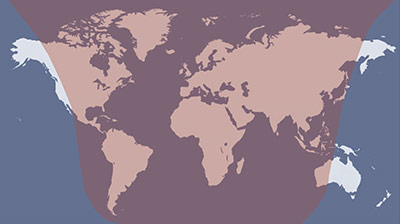
Visible in all of North and South America, eastern Australia and western Africa. All seen in Portugal and western Spain
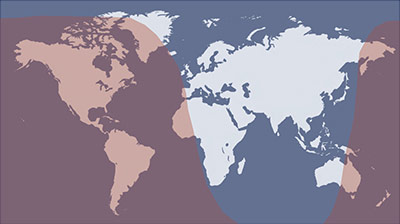
2028 Lunar Eclipses
Lunar eclipses typically occur twice annually, but 2028 is an exceptional year with three such events. The first two are partial lunar eclipses, where only a small part of the moon will fall under Earth's shadow. However, the year's highlight is the third eclipse - a magnificent total lunar eclipse. This grand spectacle will be prominently visible across Asia and Australia, offering viewers in these regions a stunning astronomical display as the moon passes entirely into Earth’s shadow.
Widely visible in North and South America, Africa, Europe and most western parts of Asia.
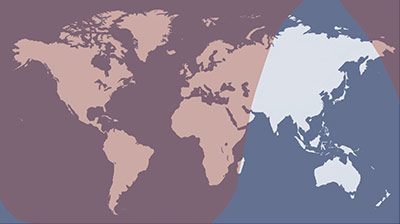
This partial eclipse can be seen across Africa, Austraila, and Asia. Also over the entire Indian ocean.
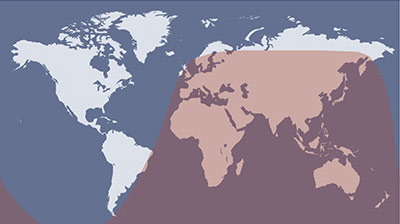
Total eclipse can be seen in most of Australia, Asia and Alaska. Europe, Africa and Western North America will see a partial eclipse.
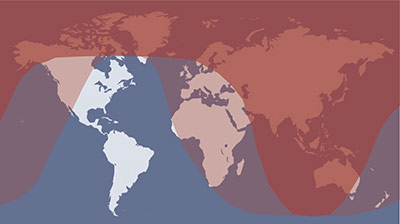
2029 Lunar Eclipses
2029 will be marked by two stunning total lunar eclipses, each offering a unique viewing experience. The first of these celestial events will be visible primarily in South America, while the second can be observed in Europe and Africa. These eclipses are particularly noteworthy as they precede a significant gap; the next total lunar eclipse won't occur until 2032. For enthusiasts and casual observers alike, these 2029 eclipses are not-to-be-missed opportunities to witness the moon in its full, dramatic splendor.
Total eclipse seen in South America, some of Central America and Western Africa. Parial eclipse in North America, Europe and western Asia.
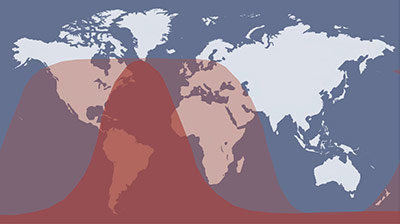
Total eclipse seen in Europe, Africa and Western Asia. Parial eclipse visible in North America, South America, Eastern Asia and western Austraila.
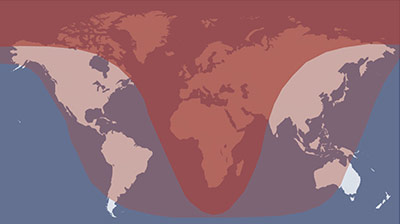
The three type of lunar eclipses
To better grasp the three distinct types of lunar eclipses, it's essential to start by examining the two types of shadows cast by Earth when it obstructs the Sun's rays:
The Penumbral Shadow is the fainter, outer shadow of the Earth. When the Moon passes through this shadow, it experiences a penumbral eclipse. In this type of eclipse, the Moon's brightness only slightly diminishes, as the sunlight is partially obscured. This subtle change often makes penumbral eclipses difficult to observe, as the Moon's appearance changes only marginally.
The Umbral Shadow is the darker, inner shadow of the Earth and represents the area where the Earth completely blocks direct sunlight from reaching the Moon. There are two types of umbral eclipses: total and partial. In a total lunar eclipse, the entire Moon falls into the umbral shadow, often acquiring a dramatic reddish tint due to the refraction of sunlight through Earth's atmosphere. In a partial lunar eclipse, only a portion of the Moon passes into the umbral shadow, leading to a noticeable darkening of a part of its surface. These umbral eclipses are more striking and easier to observe compared to penumbral eclipses.
Total Eclipse
A Total Eclipse, often referred to as a "Blood Moon," happens when the moon is completely obscured from the sun's rays. This phenomenon occurs when the Moon is situated in the Umbra, the darkest region of Earth's shadow, receiving little to no direct solar radiation. The term "Blood Moon" arises from the moon's reddish hue observed during this phase. This coloration is due to Earth's atmosphere filtering out most of the blue light and allowing the red light to reach and reflect off the moon's surface.
Unlike other lunar eclipses that are visible over extensive areas of the Earth, the "total" phase of the eclipse can only be observed in a relatively smaller region. Similarly, while the overall duration of an eclipse can span several hours, the period during which it is fully total is typically much shorter. This makes the total eclipse phase both rare and spectacular, offering a unique viewing experience.

Partial Eclipse
A Partial Eclipse occurs when the moon partially enters the Umbra, Earth's darkest shadow, while not being entirely obscured from the sun's rays. In this position, the Moon straddles the boundary between the Penumbra, Earth's lighter shadow, and the Umbra.
From Earth's perspective, this type of eclipse results in the Moon appearing partially shaded on one side. The shaded portion is the part of the Moon covered by the Umbra, the darkest segment of Earth's shadow.
Partial Eclipses are typically visible across a broad swath of the Earth, making them accessible to a wide audience. These eclipses offer a distinct and gradual transition of shadows, showcasing the dynamic interaction between the Earth, Moon, and Sun.

Penumbral Eclipse
A Penumbral Eclipse takes place when the moon traverses solely through the Penumbral region of Earth's shadow. The Penumbral shadow is partially lit, as it does not completely block out the sun's rays. This lighter shadow effect is due to the relative sizes of the Sun and the Earth.
During a Penumbral Eclipse, the moon's brightness diminishes only slightly when observed from Earth. As a result, this type of eclipse is among the more subtle and less dramatic lunar eclipses, often challenging to notice without careful observation. The changes in the moon's appearance are gradual and less pronounced, making the Penumbral Eclipse a nuanced celestial event.

Lunar Eclipse Resource
There are many great resources online for more detailed information on any of the lunar events listed on this page. If you are looking for past events check out this list of Eclipses of the Sun and Moon from the United States Naval Observatory. For very detailed information to a specific location use the Lunar Eclipse Computer also on the Naval Observatory website. These resources also have very detailed information on solar eclipses but a good starting point is our Moongiant | Solar Eclipse Calendar.
